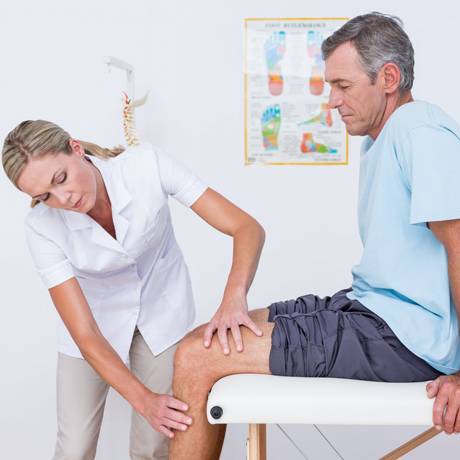Complex Regional Pain Syndrome (CRPS), formerly known as Reflex Sympathetic Dystrophy (RSD), is a chronic pain condition characterized by severe, unrelenting pain out of proportion to what one would expect from the severity of the injury. CRPS normally arises after trauma and can include sprains, strains, or fractures, as well as needlestick injuries, a frequently overlooked cause.
Complex regional pain syndrome (CRPS), is a disorder that is formerly known as “reflex sympathetic dystrophy,” or “RSD.” The condition can complicate recovery and impair one’s functional and psychological well-being. CRPS is a chronic neurological disorder characterized by disabling pain, swelling and impairment of motor function. Complex regional pain syndrome normally starts after an injury of the extremities. It is a chronic pain condition that one generally experiences after an injury, caused by damage to the body’s nervous system. Most of the time it occurs in one limb, such as an arm or a foot. However, it also has the capability to spread to other limbs, especially the alternate limb to the one currently affected, if it is severe.
Individuals with CRPS could experience
However, the most common symptom of CRPS is chronic, prolonged, severe pain that does not stop and remains constant, causing extreme discomfort to the individual.
There are two main types of CRPS: CRPS-I and CRPS-II. If you have a confirmed injury that has been directly linked to your chronic pain, you fall under CRPS-II. Without an injury that can be linked to your pain, you are classified as CRPS-I. 90% of CRPS cases are triggered by a known injury and can be directly associated with trauma.
Post-Traumatic CRPS is a chronic pain condition that happens after a traumatic injury (such as fractures, sprain, or surgery) of the arms and legs. The intensity and duration or post-traumatic CRPS are quite variable. The condition seems to be unpredictable between accident victims – but it’s been found that accident victims with severe post-traumatic pain and/or sympathetic dysfunction benefit from long-term multidisciplinary treatment, including physiotherapy, psychological therapy, and pain-relieving measures such as nerve block injections.

Medication: There is no specific drug approved to treat CRPS, and no single drug is used for all accident victims who suffer from CRPS. However, some common medications that can be prescribed include anti-inflammatory drugs, lidocaine, antidepressants, and opiate painkillers depending on the severity.
Rehabilitation and Physical Therapy: Doctors may advise that CRPS patients engage in a specifically targeted exercise program to improve the function of the affected limb. This can help the individual re-learn muscle memory and assist in performing daily tasks.
Botox injections: Botox injections as a medical treatment for those who are suffering from chronic pain is becoming more popular, as it effectively freezes or numbs the nerves in that location. This provides short-term relief and the cost is sometimes covered by OHIP, depending on the details of the situation.
Psychotherapy: CRPS is often identified as a cause of many psychological symptoms, such as anxiety and depression, and therefore psychotherapy may be prescribed or recommended as part of the recovery process.
Neural or spinal cord stimulation: During this process, electrodes are inserted near the nerves or the spinal cord in order to stimulate the area. Some of these methods are still controversial in the medical world and require further research, but a doctor may believe that this option would help for short-term pain relief.
Sympathetic nerve block: Nerve block injections are typically the first course of treatment for a person with CRPS. Nerve block injections can provide significant pain relief for some people.
It is important to note that not all treatment methods are effective for individual accident victims, and that there is a risk of complication arising from CRPS that could have long lasting impact. For example, if the treatment does not begin early enough, it could lead to deteriorating muscle tissue and permanent muscle tightening. This can cause a negative impact that may require long-term, ongoing treatment.

If you cannot perform the substantial duties of your own occupation because of your CRPS, you may in fact meet the definition of total disability and be eligible to receive long-term disability benefits. Most disability policies call for a change of definition after 24 months of disability payments. At that point, the claimant must be considered totally disabled from any occupation for which he or she is reasonably suited by education training and experience. If your chronic regional pain syndrome causes you to have unrelenting symptoms such as:
then you may in fact be unable to complete the substantial duties of any occupation for which you are reasonably suited by education training and experience.

At this point, your insurance carrier may employ their own investigation team, including medical professionals, to assess your situation and determine if you are capable of returning to work. For this reason, it is best to work with a Hamilton disability lawyer who can build you a strong defence against your insurance carrier. We work with our own team of medical professionals, vocational experts, and those in other related fields to ensure that you are able to prove undoubtedly that you are incapable of working. It is our goal to ensure you continue to receive the financial benefits you are entitled to as a paying policyholder.
If you suffer from chronic regional pain syndrome, formally known as RSD, and you haven’t reasonably been denied or cut off your long-term disability benefits, it’s important that you contact our Hamilton disability lawyers to discuss your situation. Our consultations are free, and without obligation. That we will be happy to sit with you and explain your legal rights to you. If you decide at that point that you wish to appeal the denial of your long-term disability benefits, our Hamilton disability lawyers would be happy to help. Call us at 905-333-8888 or fill in a contact form today.
We Can Help. Contact us 24/7
start your case905-333-8888VOTED BEST LAWYERS IN CANADA 2018, 2019 & 2020